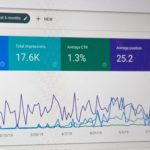In our latest webinar, Marketing Attribution in Support of a Full-Funnel Strategy, Martin Šimo, Former CMO and Current CDP Principle at Bloomreach presented ways to mature your attribution and prepare for the death of cookies. Afterwards, he was joined by Kelley Sternhagen, VP, eCommerce, Marketing Analytics & Strategy at Cost Plus World Market, Geoff Sanders, CMO at Firstleaf and Houman Akhavan, CMO at CarParts.com for a panel discussion on marketing attribution best practices.
Read the recap below and watch the replay here.
SESSION RECAP
Maturing Your Attribution Level Without Cookies
Simo’s presentation focused mainly on the five attribution levels to help us calibrate our brand’s attribution sophistication and how to move up towards a more mature model.
Level 1: Evaluate channels individually and independently. This means a brand has:
- No ability to compare channel effectiveness because each channel is measured differently
- Less cross-team communication
Level 2: Evaluate channels in a single analytics tool, such as Google Analytics
- Standardized reporting and the ability to compare quality of traffic from different channels
Level 3: Channel based attribution modeling (determining which channels affect which percentage of revenue)
- Ability to attribute revenue to individual channels (understanding how channels impact different parts of the customer journey)
Level 4: Measure the causal impact of budget changes at a channel level
- Work around limitations of attribution by analyzing specific changes
Level 5: Allocate budgets with respect to buyer stage and measure causal impact of all changes
- Similar to level 4, but includes full-funnel rather than just revenue
- Ability to measure which stage is the biggest bottleneck
Level 5+: Self-Optimizing AI-Powered Buyer Journeys At Scale
- Identify which stage of the buying process customers are in and automatically pick the appropriate communication for them
As you evaluate your own attribution level, we have to remember we’re moving towards a cookieless world. So many of us retailers are wondering what attribution will actually look like? Tracking conversions that take place across multiple sessions is already becoming increasingly hard. How do you move up this maturity model after losing cookies?
The best solution is to create a first party data strategy—it’s the only way you can continue to collect data, improve loyalty and survive the death of cookies. When creating your strategy, it’s essential to think about what the customer is getting in return for sharing this data with you—build out your loyalty programs and think about what you can offer to your customers.
Ultimately, engaging your customers in a way that they want to give you data without invading their privacy will help your brand overcome this cookie transition. If you build out a solid first party data strategy and create KPIs around the full funnel, you’ll be well on your way to mature attribution.
PANEL/Q+A
To kick off the discussion, our panelists shared how they view full-funnel attribution. Here are the main recommendations:
- Assign value to things that are hard to measure, both at the bottom of the funnel but also at the top of the funnel (store visits, organic social media followers, etc).
- Understand the customer journey and ensure you’re present in channels that your customers are most likely to interact with your brand.
- Know how your marketing inputs change your consumers’ behavior.
When it comes to applying full-funnel attribution strategies to a mature attribution model, have a clear sense of what you’re solving for (CPA, ROAS, etc), a clean source of data and a tool that processes the data in a way that all of your key stakeholders agree upon. Additionally, Sternhagen recommends being “data agnostic—don’t say no to any important data coming in.” Use the extra information to better inform your decisions and future tests. By having lots of data, a clear goal of what you’re looking for and a strong understanding of your marketing touchpoints, you’ll be able to develop mature attribution.
Testing and Healthy Skepticism
Having a healthy amount of skepticism about your attribution is helpful for teams to keep moving forward. Don’t take data at face value, whether it comes from a third party source or your own company’s reporting capabilities.
However, rather than being overly focused on reports, take a step back and look at the bigger picture. If something seems wrong based on your understanding of your customers, dig deeper and figure out what is actually going on with the data. Marketing analytics doesn’t exist in black and white—it lives in the grey. Therefore, understanding that no data is perfect and that there’s bias in everything will help better inform your strategy. Trust your instincts to generate a hypothesis and test it. You may find your assumptions challenged or see something in the system that reported incorrectly.
Pro tip: Don’t be afraid to turn things off—you can find equally valuable insights when you take something away from your budget as when you add something in.
Building Your Team
Even before testing, it’s essential to have the right people on your team. Look for critical thinkers who understand the right way to think about a research question or T-shaped marketers who deeply know their area but can bridge some of those gaps. Balance your team between skeptics and decision makers so you don’t get lost in the data and miss making positive business decisions.
Creative in Different Channels
Perfect shouldn’t get in the way of good—don’t wait to have visibility into every creative piece to start making decisions. Using tools like machine learning will help take some of the pressure off of having the perfect creative to get started. Google, for example, does a good job with machine learning, and you can analyze and test the data after making the initial decisions.
To finish the panel, our speakers shared their last pieces of advice to help you along your attribution journey:
- Bloomreach recommends not overvaluing data and losing sight of the customer.
- Cost Plus World Market advises to not be afraid to try the next thing.
- Firstleaf pushes to understand the “why” behind the data.
- CarParts.com reiterates that understanding your customer is everything at the end of the day.
Marketing attribution is a never-ending journey—it can be hard to keep up when technology and consumer behavior shift rapidly. Be sure to keep tuning in to the CommerceNext Weekly Webinars so you can stay a part of the conversation.
Related Posts
-
The Attribution Challenge: Why Your Conversion Counts From Ad Platforms Don’t Match Your Analytics
You pull together reports from all your advertising platforms (e.g.,…
-
Personalizing Your Full-Funnel Customer Acquisition Strategy
We all love a brand that makes us feel special.…
-
Driving Ecommerce Growth with Full-Funnel Marketing and Measurement
At the CommerceNext Growth Show, a diverse of industry leaders…




